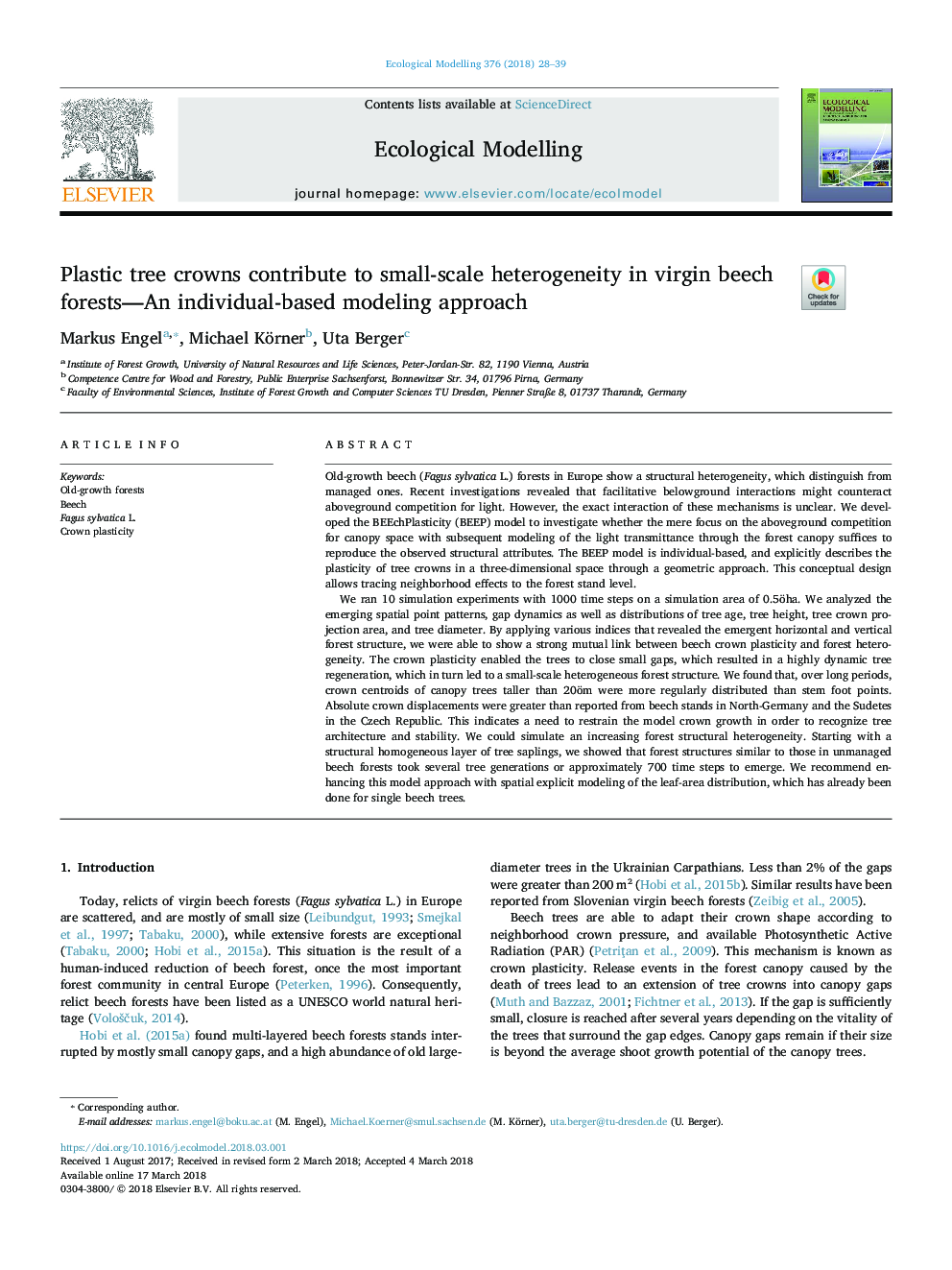| Article ID | Journal | Published Year | Pages | File Type |
|---|---|---|---|---|
| 8846063 | Ecological Modelling | 2018 | 12 Pages |
Abstract
We ran 10 simulation experiments with 1000 time steps on a simulation area of 0.5öha. We analyzed the emerging spatial point patterns, gap dynamics as well as distributions of tree age, tree height, tree crown projection area, and tree diameter. By applying various indices that revealed the emergent horizontal and vertical forest structure, we were able to show a strong mutual link between beech crown plasticity and forest heterogeneity. The crown plasticity enabled the trees to close small gaps, which resulted in a highly dynamic tree regeneration, which in turn led to a small-scale heterogeneous forest structure. We found that, over long periods, crown centroids of canopy trees taller than 20öm were more regularly distributed than stem foot points. Absolute crown displacements were greater than reported from beech stands in North-Germany and the Sudetes in the Czech Republic. This indicates a need to restrain the model crown growth in order to recognize tree architecture and stability. We could simulate an increasing forest structural heterogeneity. Starting with a structural homogeneous layer of tree saplings, we showed that forest structures similar to those in unmanaged beech forests took several tree generations or approximately 700 time steps to emerge. We recommend enhancing this model approach with spatial explicit modeling of the leaf-area distribution, which has already been done for single beech trees.
Related Topics
Life Sciences
Agricultural and Biological Sciences
Ecology, Evolution, Behavior and Systematics
Authors
Markus Engel, Michael Körner, Uta Berger,
